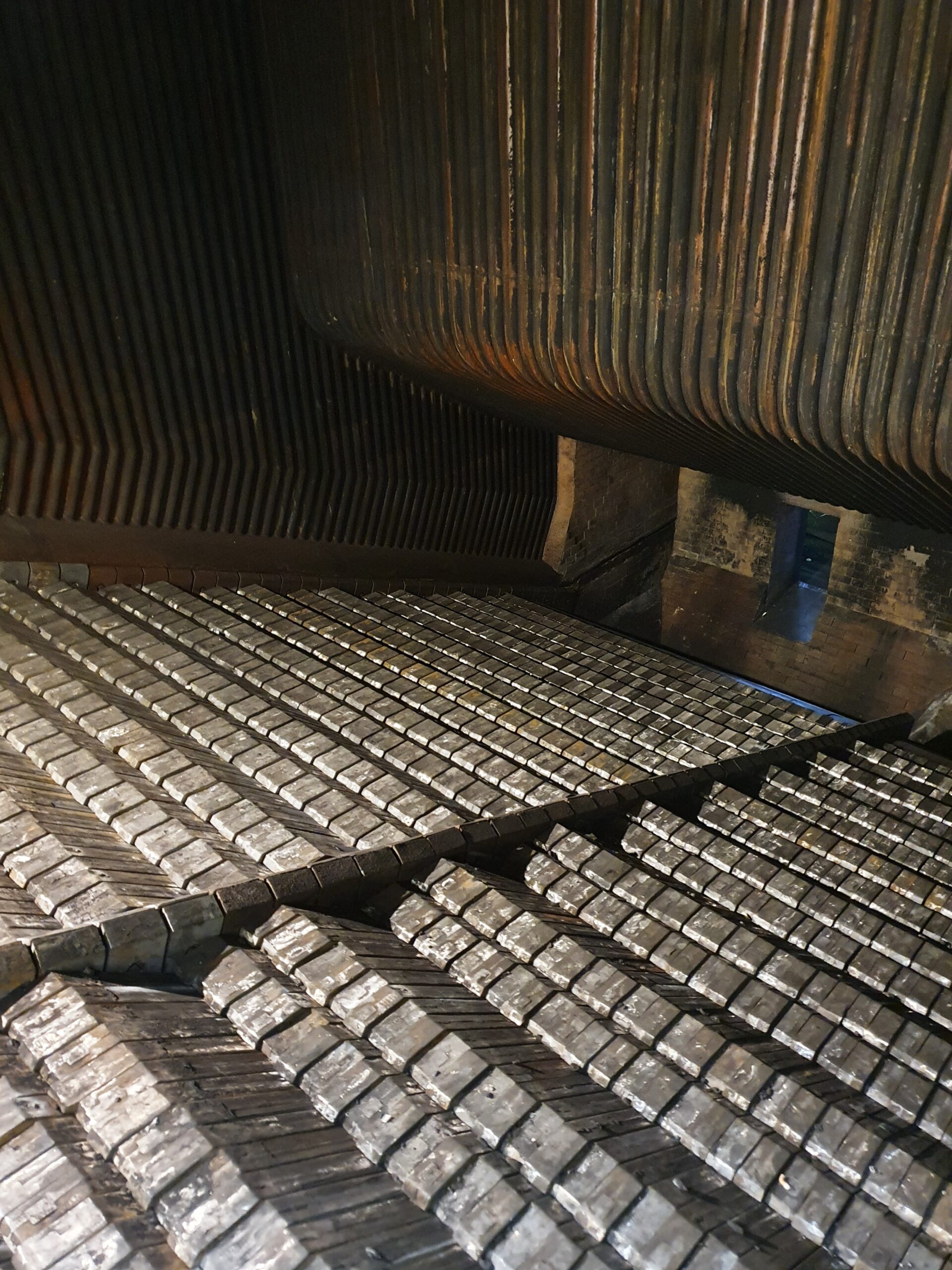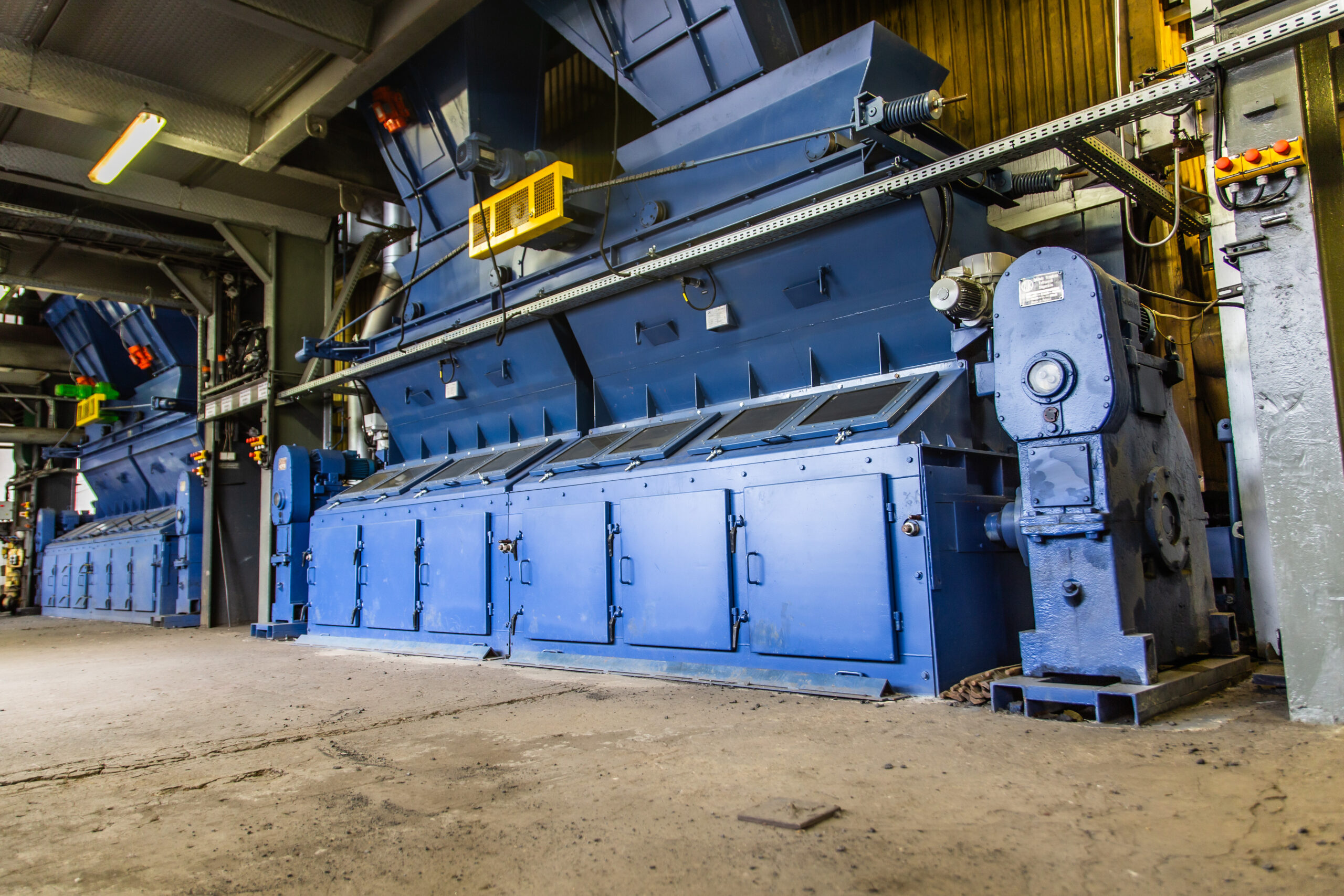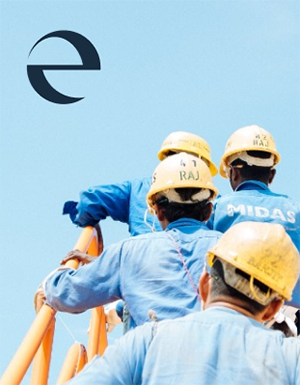The boiler grate is a boiler component used to burn fuel, such as coal, biomass, and alternative fuels, to generate heat or energy. Its strength and robust structure allow it to burn the selected fuel type efficiently. There are many options and categories of boiler grates, which differ in design and mode of operation.

We can list mechanical grates for steam boilers and water boilers with different capacities and outputs (up to 50MW):
- For boilers with capacities from 1MW to 5MW, light deck belt grates (of RN, RTS, RTN, RTSR, and RTSN types) are used.
- For boilers from 6MW to 50MW, heavy-deck belt grates (of RW, RTW, RTWC, RTWK, RTP, and RŁ types) are used.
The design of the grate box, divided into an appropriate number of zones (to have as little “dead space” without air as possible), allows the primary air to be supplied to each zone, while remaining airtight and not allowing the air to pass from one zone to another. This design ensures the proper course of the combustion process and allows the boiler to operate in a regulated and controlled manner.
ECOSERV is involved in inspections, overhauls, modernizations, and new implementations related to belt grates, introducing several changes to improve the performance of the combustion process, including:
- Replaceable centre seal bracket, with the possibility of extension due to temperature
- Side seal bracket with width adjustment
- Sealing profiles made of high-chromium materials (cast steel LH26 N4 S2) – upon the customer’s request
- Actuators in the coal hopper to control the slide gate and arch gate valve
- Grate deck components (chains, turnbuckles) in a standard version made of S235JR material or in a reinforced version with increased strength of 25HM / 40HM
- Fire-bars with different chromium content (ZlCr0.8 / ZlCr1.5 / ZlCr2.5) and weight (2.4 kg / 2.7 kg)
- Spring rings to prevent the fire-bars from falling out
- Sealed zones – not allowing any air leakage from one zone to another
- Number of zones: 6 or 7 with as little “dead space” without air as possible
- Holes in the air funnels for even air distribution
- Rear shaft adjustable in two planes on the side walls
- Sealed front wall
- Carbon hopper with sealed sight glasses
- Central lubrication system for front and rear shaft bearings – upon the customer’s request
The heavy-duty grate type is often used in steam and coal-fired boilers found in in power plants, chemical plants, the paper industry, and other industries that require high heating capacity and boiler efficiency.
It is worth noting that more environmentally friendly and efficient solutions, such as biomass boilers, have grown in popularity in recent years. A step grate is a type of grate used in biomass boilers. It is a particular type of grate designed to enable efficient combustion of organic materials such as wood, sawdust, straw, pellets, wood chips, or other types of biomass.

The step grate consists of several levels of high-chrome fire-bars made of ZbCr28, LH26 (or other chrome alloys on request), arranged in a stair-like manner. The biomass is delivered to the highest level of the grate and then gradually moved to the lower levels using a hydraulic system, in a reciprocating motion during the combustion process. This arrangement allows better control of the combustion process and ensures an even distribution of the biomass on the grate.
With a step grate, the biomass combustion proceeds in a controlled manner, so a higher yield and energy efficiency can be achieved. Furthermore, step grates are additionally equipped with various peripheral and auxiliary devices, such as fuel feeding systems (screw conveyors, feeders, pushers), and hydraulic actuator systems to ensure optimum combustion conditions.

The biomass step grate is increasingly used in newly built boiler units, whether in district heating plants, power plants, or industrial plants. However, it is worth noting that the choice of the suitable grate or biomass combustion system depends on many factors, such as the type of biomass, the scale of the system, and the efficiency and emission requirements. It is, therefore, always advisable to consult a professional or a biomass engineer before deciding on a specific solution.
ECOSERV performs inspections, overhauls, modernizations, and new implementations related to step grates and biomass feeding systems.
The coal and biomass co-firing grate is a particular type of grate used in boilers that allows the simultaneous combustion of both coal and biomass, such as sawdust, straw, pellets, wood chips, or other types of biomass. Co-firing is a process in which both types of fuel are combusted simultaneously to achieve environmental and economic benefits.

Co-firing enables the use of both the energy contained in coal and biomass, resulting in more efficient use of available energy sources and the reduction in harmful emissions.
The modernisation of the existing belt grate for biomass co-firing consists in dividing the bunker and the coal hopper into two parts, using an appropriately designed structure, as a result of which the two fuels (biomass and fine coal) can be dosed and fed separately to the existing grate deck. The scope of the modernization also includes the extension and expansion of the front part of the grate.

ECOSERV catalogue
We operate in the area of innovative technologies for environmental protection, such as pollutant neutralisation, dedusting, and filtration, dedicated to various branches of industry and power generation both in Poland and Europe. Our company is based on state-of-the-art and advanced solutions ensuring the reduction of pollutant emissions following European Union standards. We also have a wide range of equipment and installations for the heat engineering industry.



